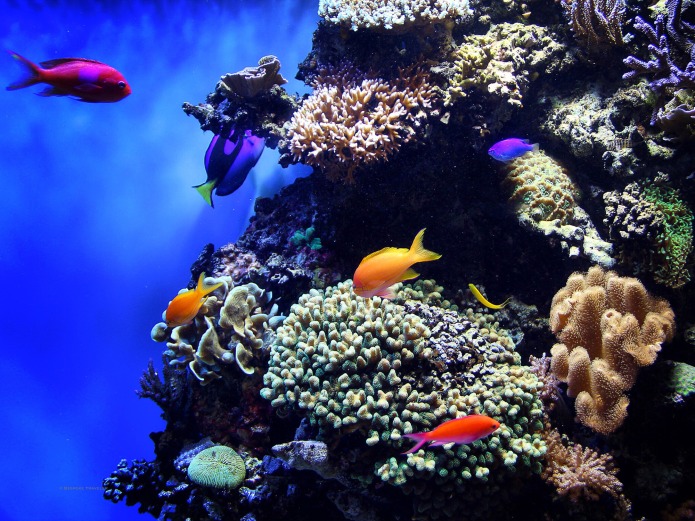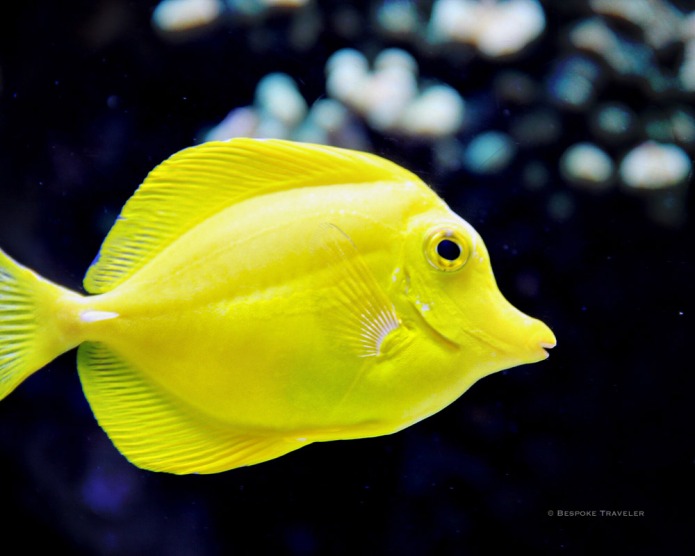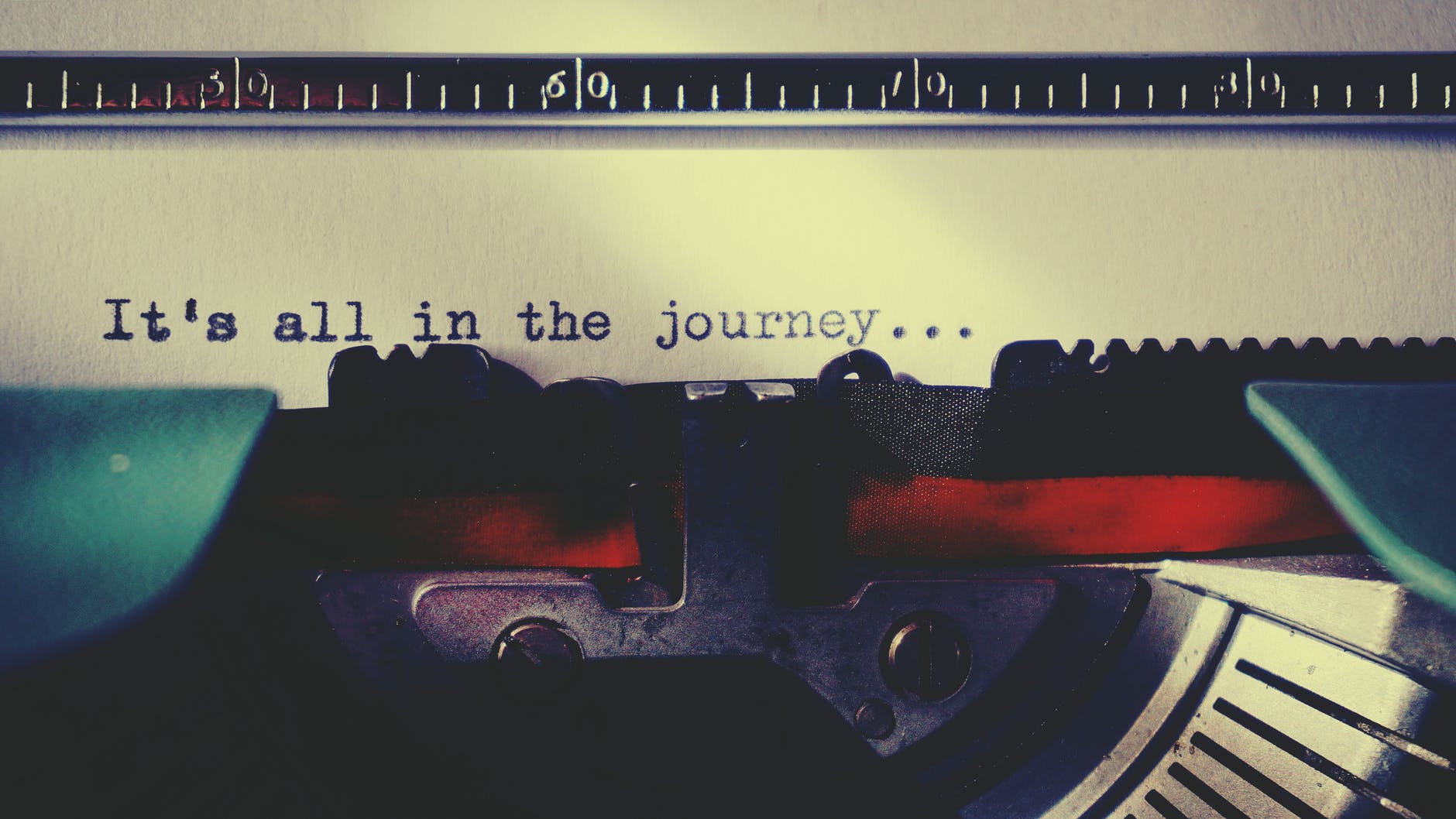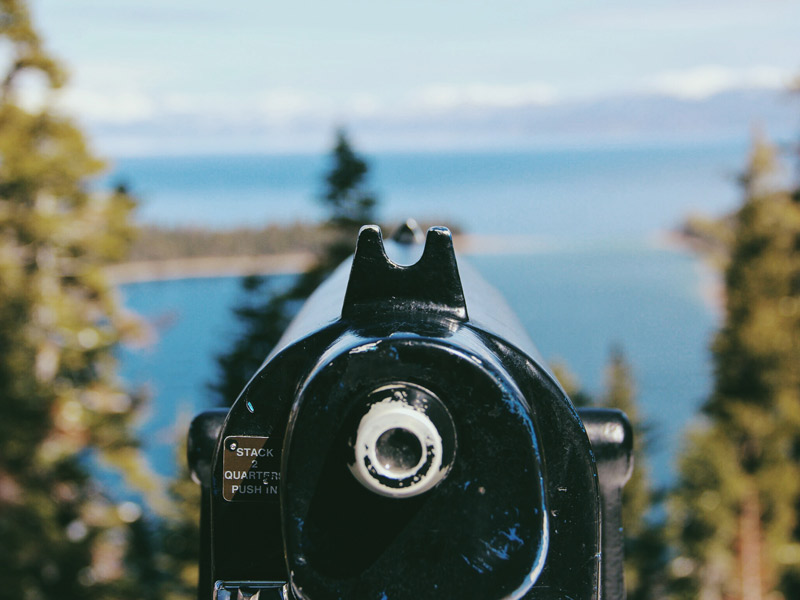 I like watching animals, four-legged, finned, or human. As a writer it is integral to my work that I observe the behavior of others in order to grasp what motivates them. It is best to do this in the creature’s natural environment: on the veldt, under the waves, or at a city café. I have been fortunate to have this opportunity, but I am not alone in my penchant for gawking. Judging from the crowd at Monterey Bay Aquarium in California, fauna viewing is not an exclusive pastime of maladjusted writers. We seem to gather instinctive joy out of ogling other beings, mesmerized by their quotidian affairs, eager to glean their intimate habits. The stranger the beast to us, the more fascinated our interest.
I like watching animals, four-legged, finned, or human. As a writer it is integral to my work that I observe the behavior of others in order to grasp what motivates them. It is best to do this in the creature’s natural environment: on the veldt, under the waves, or at a city café. I have been fortunate to have this opportunity, but I am not alone in my penchant for gawking. Judging from the crowd at Monterey Bay Aquarium in California, fauna viewing is not an exclusive pastime of maladjusted writers. We seem to gather instinctive joy out of ogling other beings, mesmerized by their quotidian affairs, eager to glean their intimate habits. The stranger the beast to us, the more fascinated our interest.
 The obsession begins at a tender age. There is the stuffed critter that accompanies our bedtimes; the books in which we learn our mother tongue through the help of illustrated wildlife; the movies about lost pets or talking bears, ducks, foxes, and fish on an adventure. Eventually, we may visit our first lion within the confines of a zoo or meet a shark inside a tank. That physical encounter is significant and will become more so for future generations as habitats diminish. The faces of the children around me hold the same expression, wonder. They inspect the circling bluefins, the undulating jellies, the placid turtles. In groups of varying attention they listen to fun facts about the mating of puffins, touch the starfish, giggle at penguin antics. For most this will be the only time they will get to experience our marine wilderness.
The obsession begins at a tender age. There is the stuffed critter that accompanies our bedtimes; the books in which we learn our mother tongue through the help of illustrated wildlife; the movies about lost pets or talking bears, ducks, foxes, and fish on an adventure. Eventually, we may visit our first lion within the confines of a zoo or meet a shark inside a tank. That physical encounter is significant and will become more so for future generations as habitats diminish. The faces of the children around me hold the same expression, wonder. They inspect the circling bluefins, the undulating jellies, the placid turtles. In groups of varying attention they listen to fun facts about the mating of puffins, touch the starfish, giggle at penguin antics. For most this will be the only time they will get to experience our marine wilderness.
 I remember the emaciated tiger I beheld at my first menagerie, pacing its empty double-barred cage — within its miserable face were eyes that contained other worlds. Decades later, as an adult I confronted that uncanny look in its unfettered complexity at Ranthambore National Park. Only then did I comprehend a little of the appeal behind our scrutiny of other species. Stare into a snake’s slits, a cheetah’s pupils, a dolphin’s aperture and they reveal a peculiar familiarity. They are of us yet separate; sharing common traits of physiology while existing as complete realms unto themselves. We examine them, collect data about them, survey them behind glass. Still they mystify us by a sideways glance, a long probe, an abrupt confrontation that puts us in our place. Baffled by our need of them and our power over their fate, we grapple with how to subsist with them. We enslave them, idolize them, make sport of them, gather them in containers, and anthropomorphize them, always measuring them against our distorted standards. Though we share one planet, it seems our universes can only collide.
I remember the emaciated tiger I beheld at my first menagerie, pacing its empty double-barred cage — within its miserable face were eyes that contained other worlds. Decades later, as an adult I confronted that uncanny look in its unfettered complexity at Ranthambore National Park. Only then did I comprehend a little of the appeal behind our scrutiny of other species. Stare into a snake’s slits, a cheetah’s pupils, a dolphin’s aperture and they reveal a peculiar familiarity. They are of us yet separate; sharing common traits of physiology while existing as complete realms unto themselves. We examine them, collect data about them, survey them behind glass. Still they mystify us by a sideways glance, a long probe, an abrupt confrontation that puts us in our place. Baffled by our need of them and our power over their fate, we grapple with how to subsist with them. We enslave them, idolize them, make sport of them, gather them in containers, and anthropomorphize them, always measuring them against our distorted standards. Though we share one planet, it seems our universes can only collide.
 When we gaze into an animal’s life, what is it we hope to catch? I find tranquility while contemplating crimson-gold sea nettles flow past me through an electric blue background. A black-necked stilt wading through planted grass fills me with nostalgia. As the anchovy school spiral around the kelp forest exhibit, I swim with them in my imagination. For a brief moment I partake in their grazing ritual, mouth agape, a teeming underwater fabric coursing through me. It is hallucinatory and like all such excursions comes with a price, but not one I will pay. I can walk out into the coastal California sunshine. Free to wander away, I can leave the captive creatures of the deep revolving around their artificial domains. I can relegate the starfish, anemone, otter, and manta to mere circus attractions.
When we gaze into an animal’s life, what is it we hope to catch? I find tranquility while contemplating crimson-gold sea nettles flow past me through an electric blue background. A black-necked stilt wading through planted grass fills me with nostalgia. As the anchovy school spiral around the kelp forest exhibit, I swim with them in my imagination. For a brief moment I partake in their grazing ritual, mouth agape, a teeming underwater fabric coursing through me. It is hallucinatory and like all such excursions comes with a price, but not one I will pay. I can walk out into the coastal California sunshine. Free to wander away, I can leave the captive creatures of the deep revolving around their artificial domains. I can relegate the starfish, anemone, otter, and manta to mere circus attractions.
 As we struggle with our responsibilities towards them, what role will places like the Monterey Bay Aquarium play in this complicated puzzle? Will it be too late for the field trippers being taught about the dangers of contamination to devise holistic solutions to protect the ocean’s depleting diversity? Which of the youngsters purchasing plush whales as souvenirs will regard the kingdom of non-humans as valuable unto itself? In the midst of raging debate over the morality of zoos and vivariums, the responsibility of stewardship belongs not just to these institutions but also each of its patrons.
As we struggle with our responsibilities towards them, what role will places like the Monterey Bay Aquarium play in this complicated puzzle? Will it be too late for the field trippers being taught about the dangers of contamination to devise holistic solutions to protect the ocean’s depleting diversity? Which of the youngsters purchasing plush whales as souvenirs will regard the kingdom of non-humans as valuable unto itself? In the midst of raging debate over the morality of zoos and vivariums, the responsibility of stewardship belongs not just to these institutions but also each of its patrons.
 A few steps away, under the cobalt Pacific depths, untamed cousins of all the aquarium dwellers perform their dance. If I am to do these fauna justice I have to become a participant. I have to further decrease my consumption and commit to my recycling habits. I have to learn about aquatic ecosystems. I have to support the unbiased scientific research that carries on behind the scenes. I have to do more than visit wildlife reserves and national parks to gaze at the inhabitants. I must be a partner to the beasts who provide me with so many life lessons. Then, I can look them in the eye.
A few steps away, under the cobalt Pacific depths, untamed cousins of all the aquarium dwellers perform their dance. If I am to do these fauna justice I have to become a participant. I have to further decrease my consumption and commit to my recycling habits. I have to learn about aquatic ecosystems. I have to support the unbiased scientific research that carries on behind the scenes. I have to do more than visit wildlife reserves and national parks to gaze at the inhabitants. I must be a partner to the beasts who provide me with so many life lessons. Then, I can look them in the eye.
TRAVEL NOTE:
Plastic pollution is a major threat to marine wildlife and the Monterey Bay Aquarium is working to be part of the solution by avoiding single-use plastic. Visitors are encouraged to bring their own reusable bags and, when purchasing gifts, choose items that are environmentally responsible and made by local artisans.
Have a favorite children’s book about animals? Have a favorite underwater creäture you have seen? Share in the comments below.
Discover more from Bespoke Traveler
Subscribe to get the latest posts sent to your email.





I hope for everyone who loves visiting aquarium to be able to visit Monterey Bay Aquarium. 🙂 It’s like the aquarium meter in terms of quality. Great post, especially you’re writing like a pro.
Thank you.
Such gorgeous photos. I am particularly attracted to the one of the shoal of fish and its abstract quality. Monterey Bay Aquarium looks like a great aquarium.
Thank you so very much! I am so very honored to hear such praise from you!
Fabulous photos. I know releasing helium balloons is a lovely symbol of letting go and is a beautiful visual image – but I worry that so many end up in the ocean.
Indeed, so many things we think are harmless turn out to harm our environment. Part of it is wanting to become more aware of such things and part of it is making an effort every day to change the way we live. Thanks so much for sharing your ideas.
Some of these pictures! Wow! Were these taken in an aquarium? The first one looks almost like an illustration and the ones with silhouettes remind me of performance/theatre.
I’ve always been uneasy with zoos and more recently with aquariums too. I always think they don’t look very happy too :/. I love the issues that you raise in your posts.
Thank you. The photos were all taken at the Monterey Bay Aquarium in California. Like you I feel uncomfortable in zoos and aquariums. The creatures are displayed very beautifully prompting one to think of them as art objects, which they are not. One wonders how regarding them in this way affects our views about wildlife. Thanks for chatting with me about this issue.
That’s true. Hope I didn’t offend
Not at all! It was fantastic that you brought up the idea.
Not intentionally, I was just appreciating the photos :). It’s a good point that you raise though!
Such incredible shots!! Love following your work.
I appreciate your kind words.
Beautifully written thought provoking post, Jesse and Atreyee. And wonderful images, as always. I share your deep concern for our environment and your love for nature’s creatures. I do not feel good about where we are headed and what our leadership is doing about it.
Thank you Jane. Who knows how far down the road we will go before concern for the environment becomes more than an issue for “nature lovers”? In the meantime, we try hard to do our little part.
Reblogged this on Journal Edge and commented:
Article Source: bespoketraveler.com
Wonderful subjects and post. I especially love the images that include the silhouettes of people.
Honored by your compliment.
Hi, I agree with Cindy – simply – fabulous captures! Bye. Kamila
So kind of you to say! Thanks.
Beautiful photographs! And an incredibly insightful writing.
Thank you so much for visiting and for your compliment.
I found this a very powerful post. The dilemma between admiring animals for leisure or aesthetic reasons versus a genuine desire to protect them and preserve their environments is something that I’ve thought about a lot myself. Unfortunately, a commitment to the latter is a lot harder than the former. But if aquariums like this can inspire visitors to make a difference, then I truly believe they can be valuable institutions.
The doing is always harder than the looking. I was inspired by the number of practical things that the aquarium is doing and though it will take more work on my part, I want to be more vigilant about my own plastic use and about what seafood I choose to eat. I appreciate you sharing your thoughts about aquariums and conservation with me.
An apt post as I’m going to the London Aquarium for the first time today. The photographs are stunning and your post catches the magic of places such as these whilst still raising important ethical questions about their place in our society. Well run with consideration and care I am happy I can have the opportunity to visit and enjoy the wonders.
I can no longer afford to simply enjoy watching wildlife, so I am happy to be a patron of places that are looking to implement conservation solutions, work with local fisheries, and educate their visitors. I am going to work even harder to do my little bit. I would love to hear back from you as to what you thought about the London Aquarium after your visit!
These photos are just magnificent. Your words give much to ponder without being shrill. I love to observe other species, too. I often find them much more fascinating than humans.
Thank you for saying this as my intention is never to tell others what to do, but to share my own struggles and through my ramblings perhaps have someone think about things differently than before.
I enjoyed visiting zoos and aquariums as a kid. As an adult — I hated them. The more I realised how trapped I felt in situations, I began to see what it might feel to be trapped in a tank or cage. I imagine setting birds free and fish back into the sea. 🙂 Visiting national parks made me feel stronger about those feelings. You touch upon an important topic, curiosity, survival and freedom. I wonder if there is another way to strike a balance?
🙂 Have you ever read “Harry Potter and the Philosopher’s Stone”? In it there is a scene where the main character empathizes with a captive snake at a zoo because he shares a similar living situation. Later he magically (though unintentionally) releases the snake. At this point a true balance is going to be impossible to achieve. Some claim that zoos and aquariums are the only way to save animals from extinction which makes it even more difficult for me to be complacent about watching these creatures behind their glass boxes. I think any real solutions will happen if we as a species are willing to make huge sacrifices about how we live.
I haven’t read it. 😦 “I think any real solutions will happen if we as a species are willing to make huge sacrifices about how we live.” Couldn’t agree more!
If only we weren’t so anthropocentric and short-sighted. It is to be feared that those traits will only worsen with escalating human overpopulation. While my attitude toward zoos is ambivalent and visits are always tinged with sadness, the alternative would even be even sadder. Thank you for raising awareness about our responsibility for conservation.
It is a challenging topic to talk about. Who do we look after first: Ourselves, our family, our tribe, our country, our species….? The answer determines so many outcomes. The easy shortsighted solutions always seem so alluring. I really appreciate you sharing your thoughts with me about this.